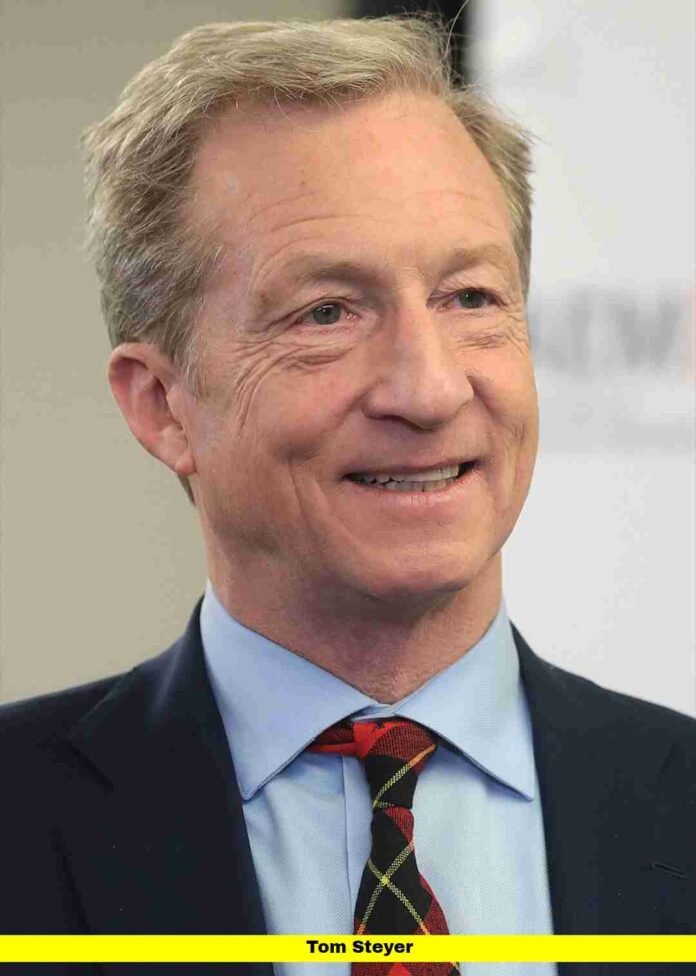tom steyer announced on November 19, 2025, that he is running for California governor, kicking off a campaign that centers on housing affordability, corporate accountability, and energy cost relief. The billionaire climate activist framed his bid as an effort to make life more affordable for Californians and to take on entrenched corporate power in Sacramento.
A clear campaign launch
In a video and statements released Wednesday, Steyer laid out a concise set of priorities that anchor his entry into the already crowded 2026 governor’s race. He emphasized housing as the state’s most urgent problem and promised aggressive targets to address it. He also highlighted energy reform, consumer relief, and changes in campaign finance as pillars of his platform.
What he’s pledging
- Build one million homes in four years to ease the housing shortage.
- Reduce electricity bills by roughly 25% through measures aimed at ending monopoly pricing and expanding clean energy competition.
- Make corporations “pay their fair share” and close corporate loopholes to fund public programs.
- Expand access to preschool and community college by using revenue from corporate reform.
- Ban corporate PAC money from state elections to reduce special-interest influence.
Why this matters now
California faces persistent affordability problems: housing shortages, rising utility costs, and uneven economic recovery across regions. Steyer’s entry adds a high-profile, well-funded alternative to the Democratic field and shifts the conversation toward structural fixes he says can be enacted statewide. His platform is pitched as practical and urgent, designed to pull on voters’ everyday concerns about cost of living.
A candidate with history in politics and activism
Steyer is a longtime political donor and climate activist who has used his wealth to back progressive causes and ballot measures. He previously launched a national campaign for president and has spent heavily on political initiatives in California. That background gives him name recognition and deep fundraising experience, while also opening him to scrutiny over past investments and political spending choices.
How he frames his outsider case
Steyer positions himself as a problem-solver who built a business in California and now wants to give back. He argues that Sacramento’s political class has failed to deliver on affordability and that bold action, backed by money and management experience, can yield fast results. His message blends policy specifics with a promise to shake up the status quo.
The political terrain he’s joining
The 2026 governor’s race already includes a mix of elected officials, former officeholders, and other well-known figures. Steyer’s candidacy will reshuffle the Democratic primary dynamics by introducing a politically independent, deeply financed contender who can run high-profile advertising and invest in statewide ground operations quickly.
Strengths and vulnerabilities
Strengths: Steyer brings large personal resources, organizational capacity, and a history of funding progressive causes. He has name recognition from prior political efforts and a base among climate and reform-minded voters.
Vulnerabilities: Critics point to his hedge-fund past and previous political bids as possible liabilities. Opponents may highlight prior investments and question whether a billionaire can credibly represent everyday Californians. He also faces the challenge of winning broad support across the diverse regions of the state.
What to expect next
- Rapid campaign spending on early messaging that spotlights housing and energy.
- Targeted outreach to suburban and Central Valley voters where affordability concerns are acute.
- Responses from other contenders focusing on experience in elected office or alternative policy prescriptions.
- Media and opponent scrutiny of Steyer’s past investments and political spending.
A campaign built on measurable promises
Steyer’s strategy emphasizes measurable goals — the one million homes target and a 25% electricity bill cut are concrete numbers voters can watch. That approach aims to convert broad frustration into specific policy benchmarks that the campaign can reference throughout the primary and, if nominated, the general election.
How his proposals might be implemented
While the campaign offers short, decisive goals, translating them into law will require coordination with the state legislature, regulatory agencies, and local governments. Building a million homes would involve zoning changes, funding incentives, and regulatory reforms. Lowering electricity costs would require action on utility regulation, grid competition, and clean-energy deployment. Each promise would thus face policy, legal, and political hurdles even if backed by executive will.
Reactions from political observers
Political watchers see Steyer’s entry as a sign that economic frustration — not just culture-war polarization — will define parts of the 2026 campaign. Some analysts say his financial firepower will let him play offense early. Others argue voters may prefer candidates with elected-office experience. The field is expected to sharpen around housing and cost-of-living solutions as a result.
What voters should watch
- Details on how his housing plan will interact with local land-use rules and city governments.
- Specific proposals for utility reform and how they would impact energy providers and ratepayers.
- Fundraising reports and how much of his personal wealth he deploys versus outside contributions.
- Polling that measures how his entrance changes the dynamics in early state surveys.
Broader implications for California politics
A high-profile entry by a billionaire activist means more money, more ads, and a more nationalized race. For Democrats, this could accelerate debates about progressive vs. establishment solutions and how to balance bold policy goals with coalition-building. For voters, the campaign will offer clear contrasts on how different candidates propose to relieve cost pressures.
Bottom line
tom steyer’s gubernatorial bid brings a well-funded, policy-focused voice to a contest defined by affordability and governance. His platform centers on big, measurable promises that aim to reshape how the state tackles housing and energy costs. The coming months will test whether his resources and message can overcome political skepticism and translate into widespread voter support.
Share your thoughts — how do you feel about his housing and energy plans, and what would you ask him at a town hall?
